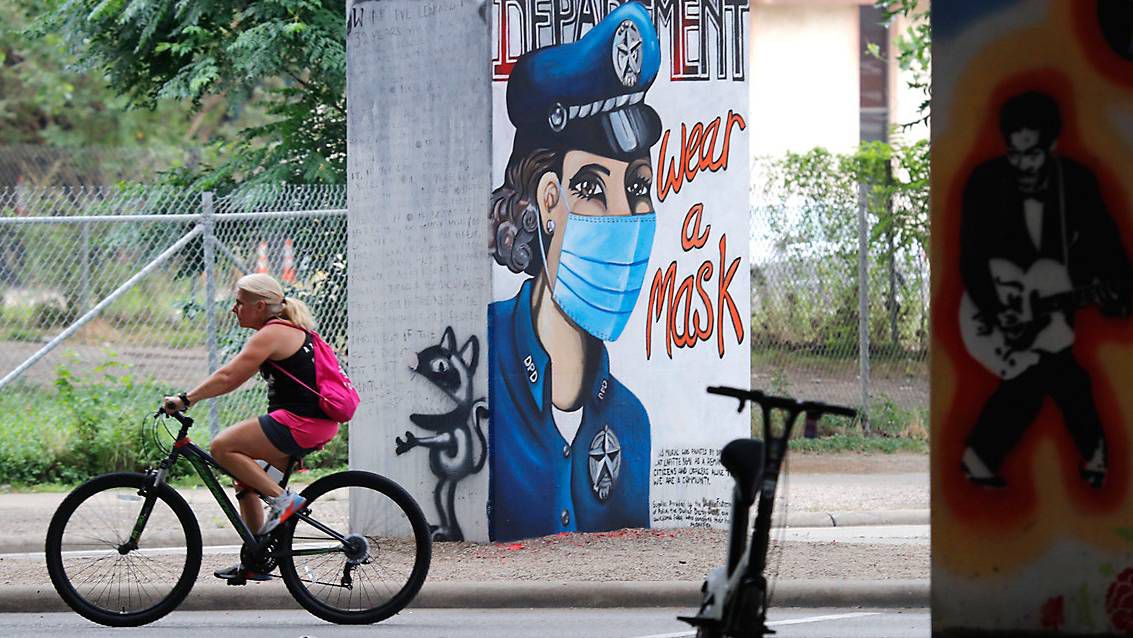A week of consistent, daily increase in COVID-19 cases in Texas has put the state in the spotlight as a new, national hotspot of the global pandemic.
In the past week, the state has recorded record-breaking numbers of daily cases. On Wednesday, Texas reported 8,076 new cases statewide, a 24 percent increase from 1,949 new cases on May 31.
The Texas Dept. for Health Services said the state had recorded 75,000 new cases in just three weeks between June 8 and June 29.
Hospitalizations are on the rise, too. As of July 1, there were 6,904 hospitalized with COVID-19 compared to 1,756 a month ago. Today, several of the state’s largest population centers are considering reinstating stay-at-home orders.
So what happened in Texas to cause the new surge?
The country’s top infectious disease expert and a member of the White House Coronavirus Task Force, Dr. Anthony Fauci, told a Senate hearing Tuesday, that he was alarmed by the resurgence of cases in the South and Southwest, saying more than 50% of the nation’s new infections were in Texas, Florida, California, and Arizona.
Fauci, while being careful not to point any fingers at specific states, suggested that part of the uptick in cases may be a result of these states’ reopening phases, “perhaps maybe in some, going too quickly and skipping over some of the checkpoints.”
Lt. Gov. Dan Patrick responded late Tuesday by telling Fox News that Texas was relying on its own experts and data when it came to formulating the state’s response.
“I don’t need his advice anymore,” Patrick said regarding Fauci’s comments.
Gov. Greg Abbott announced a statewide, phased reopening of businesses on May 1 after the expiration of a stay-at-home advisory that began on March 31. Local governments were mandated to follow the governor’s decision and guidelines on reopening phases.
Meanwhile, other states such as Georgia and Arizona also began reopening, a move that is now being criticized by some health experts after scenes of crowded beaches and bars showed that suggestions to social distance and wear a mask were not being followed.
Last week, COVID case numbers continued to spike on a daily basis in Texas, and Abbot on June 25 halted Texas’ reopening phases. He ordered bars to close again and for restaurants to scale back to 50 percent occupancy, describing the rise in statewide cases as a “very dangerous turn.”
County leaders from Texas’ major population centers bearing the brunt of the sharpest spikes in COVID patients, including Harris, Bexar, Dallas, and Travis counties, this week asked the governor to roll back business reopenings and to grant local leaders the authority to reinstate stay-at-home orders in their areas.
A study by the UT Southwestern Medical Center in Dallas and released last week predicted the uptick in cases in North Texas.
Based on patient data from Collin, Dallas, Denton, and Tarrant counties, infectious disease experts at UT Southwestern Medical Center predicted a new surge could be as much as 20 percent ahead of the Fourth of July holiday. The study took into account how preventive measures, such as wearing face masks, staying at home, social distancing, hand washing, and other factors had limited the spread of infection.
“If the current growth rates persist, we could see 50 percent increases in hospitalizations in Dallas and Tarrant County by July 9,” the study said.
The research suggested that if North Texas were to return to mid-May phases of reopening, the region could flatten the curve in terms of the number of hospitalized COVID cases by Aug. 15 to less than 600 occupied beds.
North Texas area hospitals currently have 1,411 COVID-19 patients in hospitals, while the state of Texas has 6,904, according to the state Dept. of Health Services.
The UT Southwestern Medical Center study did not give statewide predictions.
Fauci in his Senate testimony Tuesday warned that at the current national rate of 40,000, the U.S. could see rates of 100,000 new daily cases in the near future.



